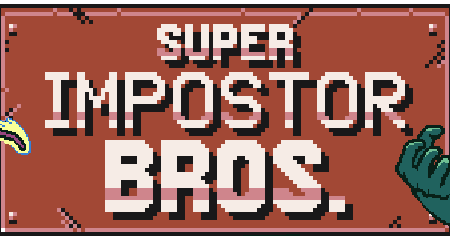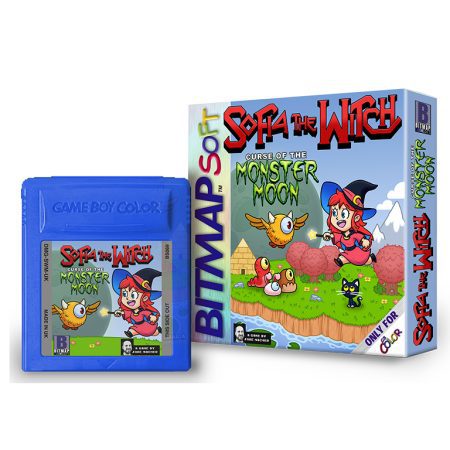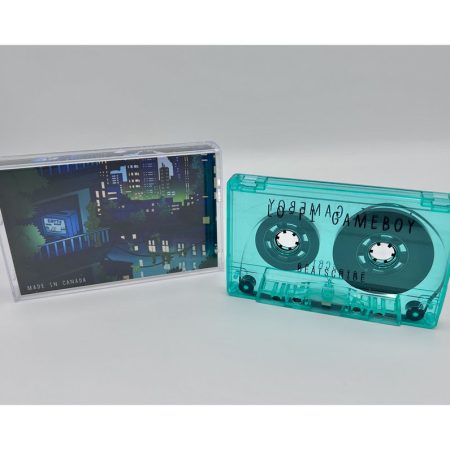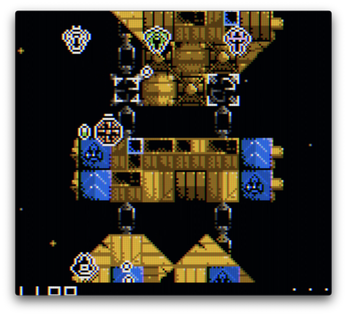Last time we chatted with Lumpy Touch, he indicated that he was working on an Among Us themed platformer. Released on March 23rd, Super Imposter Bros. exceeded expectations of what was possible to make using GB Studio. Innersloth, the creators of Among Us, granted permission for Lumpy to release this game and they were impressed as well:
“This fan game was so fun to see come to life and play, especially with all the attention to detail and charming retro aesthetics. Lumpy Touch’s work is amazing!”
Victoria Tran
Community Director at Innersloth
Lumpy’s art definitely sets the foundation for an excellent presentation, but it was thanks to the programming efforts of Dennie and music composition skills of Mel that this fan game came together and played so well. We discussed the development process with both of them last month, here’s what they had to say.
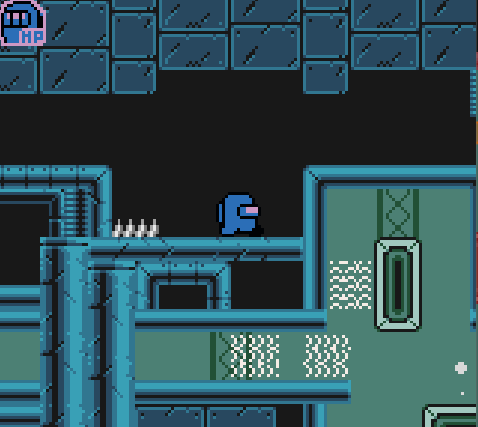
How much time did you put into the development of Super Imposter Bros?
Denee: I’d say roughly 50 hours. At first, I was implementing most of the main features, such as the collectable Key Cards, Level structure and how it feels to control your character (Speed, Traction, Jump height etc). A few weeks into development, Lumpy gave me all of the cutscene images and the script. Once the game was playable, I tested it from start to finish numerous times on emulators and on my own Game Boy. While I was waiting for feedback and some of the music, I decided to add other features such as the two difficulty settings and the music room.
Mel: I don’t exactly have a good hour estimate, the busiest months for me regarding this game were certainly January and half of February, and if I had to blindly guess, I put about a few weeks worth of time into the soundtrack alone, not counting the mastering process. (Mel released all the tracks on bandcamp as well, which can be listened to here.)
How did you get involved with this project?
Denee: I knew of Lumpy and his work, such as his Garfield Gameboy’d and Among Us videos, but I never worked on a project with him before. I was mostly submitting videos of my own projects for feedback from the GB Studio community when he approached me with his own idea for an Among Us Platformer.
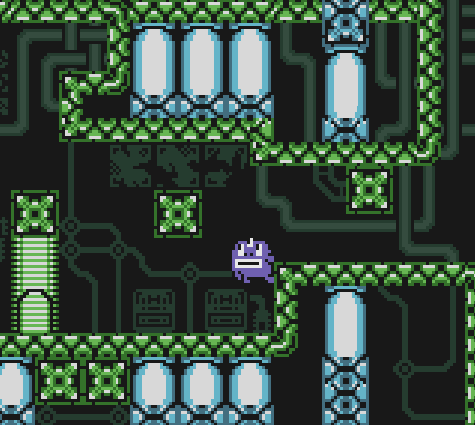
Mel: Lumpy and I have known each other for a long time now, coming up on 3 years at this point. A song I created a few months prior (Ravage Man, if my memory serves correctly) was included in some chiptune compilation video that Lumpy listened to on a stream. A real good friend of mine, CosmicGem, messaged me about it. Long story short, we liked each others’ content.
I opened commissions not long after that, and he was my very first client. We’ve been working together on various things ever since, and honestly I’m super grateful for it all. Not everything makes it out, game development is surprisingly very punishing (speaking from first-hand experience here too), but whatever gets out is often received super well. Seeing people actually like my work means a lot to me.
Can you tell me what the development process was like? Were there any really challenging parts or areas that were easy to accomplish?
Denee: I’ve dabbled in level design before, but I had to put much more emphasis on making things accessible and easier to get into. After finishing most of the levels, I had a close friend try them out for feedback. She ended up struggling with some of the segments that I didn’t expect to be challenging, so I changed a few things such as hazard placements and added an optional game mode which grants the player infinite lives.
I frequently animate, so I was fairly confident in the timing and staging of some parts of the game. Lumpy created the sprite for the Player while I created the animations for its tongue attack, the landing animation when you enter a vent, and when you exit through a pipe at the end of a level.
Mel: Not so much challenging, but very tedious and frustrating – tracking the songs themselves. I usually don’t have a problem with this, and often I work directly within the tracker, but usually that leads to songs sounding same-y (and doubly so given the GBT driver limitations). I decided that for this project, given the fact that it’s a platformer, I’d write the music in a tool I’m more comfortable with, and then deal with the headache that is tracking it into GBT.
The problem here isn’t that I’m just rewriting the score into a tracker, it’s that I used tempos that don’t really work well with GBT. I had to go ahead and bid farewell to sanity for a while, as I tracked all songs at the fastest speed possible. The upside is that I could achieve a LOT more tempo precision as well as be able to define exactly where a note or a command should go. The downside is it’s a lot more tedious this way since you’re basically doing everything manually. Counting steps and rows to make sure things stay on time, and I didn’t bother doing this well for Stage 1, so it sounds pretty wonky timing-wise, at least to me. The other part of this tediousness is not being able to use all 64 rows in patterns.
For the latter problem, I had two options: Cut patterns short and ultimately have more of them using the Dxx effect, or fit as much as I can into one pattern but lose the ability to reuse patterns and deal with trying to time stuff even more. Suddenly, your pattern cuts off mid-note and you have to manually count where to put the next note. I went with the former option, to still keep a level of sanity above my head. Speaking of tedious – Stage 3. I had too many patterns for that song, and it would simply not compile, it was too large. Knowing that, I was lamenting over making the song too complicated, but thankfully I didn’t have to cut down a lot to make it fit again. Just 2 or 3 patterns, simplify them so that they can be reused. Sidenote: This is why in the OST release there’s a “prototype” version.
After a point, I decided to force things to be easier for myself. While still working in the DAW, I forced myself to stick to known tempos that would work with GBT. All the cutscene themes did this. Once I discovered the new V2 effects (9ve and 1xx/2xx), things became… I wouldn’t say easier, but I would say more at home. I had more expression choices.
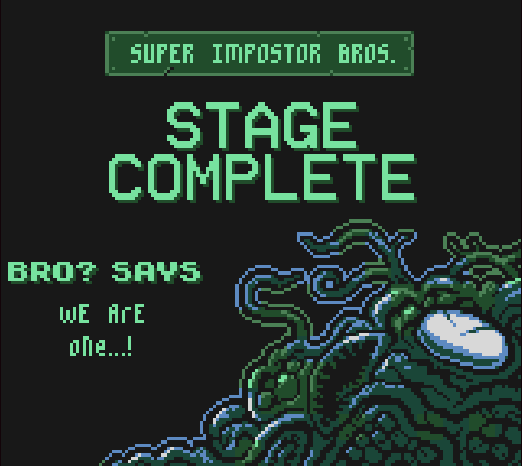
What was your involvement with GB Studio before Super Imposter Bros?
Mel: This isn’t so much a game, but the GB Studio music documentation. I wrote it from scratch (because there wasn’t anything prior, just “GB Studio uses the GBT driver, go check it out here”) with input from others in the Discord at the time. I wanted it to be a good reference, almost like a proper manual, giving you some tricks you could use to make your songs sound even spiffier.
People have been updating it ever since, and I’m glad. Maybe we should rewrite it to include the new GBT effects, and certainly once hUGE is added to GB Studio proper. We’ll see.
As for actual games, I didn’t make any of my own (simply because I don’t really have ideas), so I just stuck with making music for others. My earliest GB Studio projects were Pacdude’s The Joker’s Wild and Grogdev’s Body x Soul. There’s other projects I got involved in, some didn’t see release, some did, some are available on my portfolio to listen to a sampling of the tracks, some you might see later down the road, so keep an eye out!
(To Denee) What was the process like for working on the scenes/art/programming for this game? Did Lumpy have everything already laid out, or was it more collaborative?
Denee: Lumpy already had a solid idea of what he wanted the game to be like when he first contacted me about it. Most of the scenery and actors were finalised by the time I began working on the game. He was open to new features and ideas, so I came up with the underwater segments, the players tongue attack, and some other things. I did provide a few bits of additional scenery and obstacles, as well as the game font, but I was mostly working with the scenery and enemies that Lumpy had already created.
I also made this neat secret where if you don’t move for long enough in one of the hidden areas while in the right spot, you begin dancing!
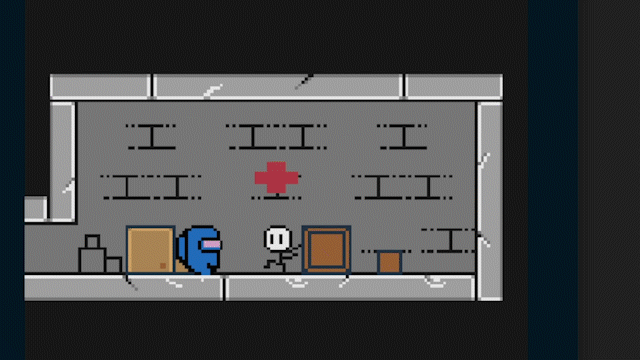
How did you approach the use of color with Super Imposter Bros.?
Denee: None of the scenery or assets were colorized before they were sent to me, but I had a good idea of the combination of palettes that I wanted to use. I wasn’t too strict with the colors of most of the scenery, but I made sure that some aspects were kept consistent, such as the metallic color for most of the electric obstacles, and a dark background with darker variations of some of the scenery to show that it couldn’t be collided with.
For the multi-choice segments at the end of each level, I aimed to keep things brighter, as to better indicate where the player was on the ship during each cutscene. After finishing most of the levels, I played through the levels and the cutscenes on my Game boy to see how the colors looked and made some changes to the palette tones if necessary.
(To Mel): You mentioned that you pushed GBT Player to its absolute limits for this game. Can you elaborate?
Mel: In hindsight, that’s marketing eye candy. It does push a lot of the limits that even I thought it had, and at the time I wrote that I did think I had pushed most everything to its limit. Looking back, I thought of a few things that I could’ve implemented, but didn’t think to.
One trick I thought about using requires ejecting the engine and changing the default waveforms. With this in mind, you can totally replace the default waveforms with ones that fully use harmonics to create chord-like structures, basically sounding like there’s 2 or more voices coming out of the wave channel. It’s also just one of possibly a handful of tricks that still hasn’t been done yet. Maybe a task for next time to push the GBT envelope even further.
Finally, not to sound cocky, but I do think that this is one of the few GBT Player soundtracks to push the engine in this manner. That title won’t necessarily last forever, better soundtracks can and will be written that take advantage of GBT in more ways that I can think of.
(Editor’s note, GBT Player integration will still be usable in GB Studio 3.0 along with the new hUGETracker integration, projects won’t be able to use both in one project however.)
How many pieces of music did you come up with for this game? Were you given specific direction on what to compose?
Mel: There were very few tracks that ended up not making it in, for one reason or another. The death jingle didn’t make it in, but it’s still part of the album. I imagine it got taken out to speed up respawning, a decision I’m fine with. There was a prototype Cutscene Goofy track that didn’t get finished, mainly because I had no real idea how to continue it, and I really hated how it sounded. It’s also part of the album, or what little was finished. There’s a bunch of found-footage effects to make it seem like it’s a relic from the past that I put onto the release, it’s nothing significant and I just wanted to do it for fun – same deal with the Stage 3 prototype.
Direction wise, I was just given a track list and some prototype gameplay footage. I went off entirely on that, sending Lumpy drafts and stuff to critique very often. A lot of the drafts ended up being final, though, and that’s a big reason why there’s very few drafts that got scrapped – it simply didn’t happen at all (not counting Cutscene Goofy). One thing I was scared of is the songs possibly not fitting at all, but I think they all fit just fine.
Is there anything else you’d like to let our readers know? Anything coming up for your?
Denee: Don’t bite off more than you can chew with your projects, and a big thanks to the community for being so helpful and friendly! I’m looking forward to showing off more of my future work when it’s ready 🙂
You can play Super Imposter Bros. on Lumpy’s Itch Page. Denee can be followed on Twitter, and you can check out Mel’s carrd for links to her portfolio and other works.

Audio Engineer, Mac Technologist and Video Game Developer. Managing Editor of GBStudio Central. (he/him)

